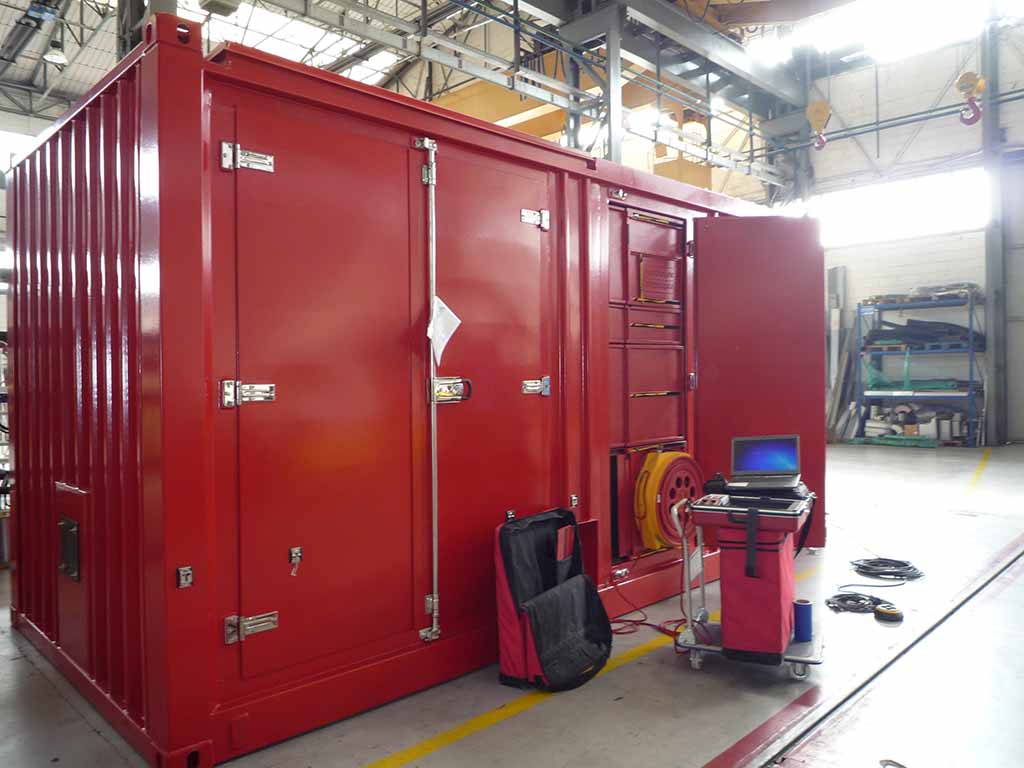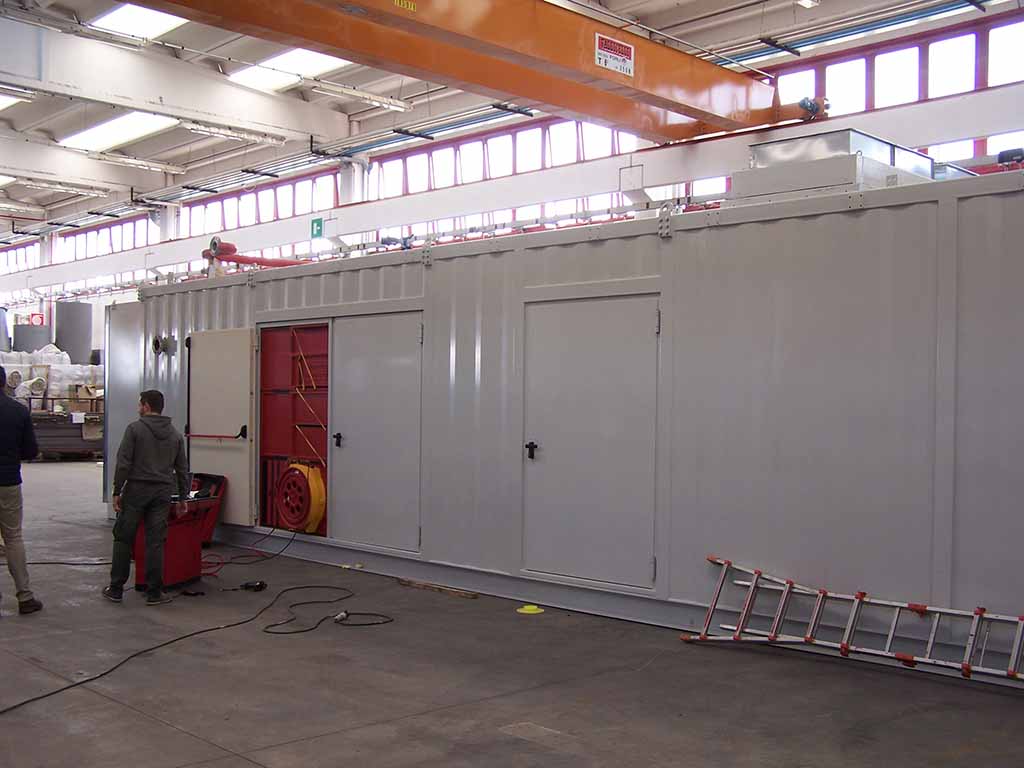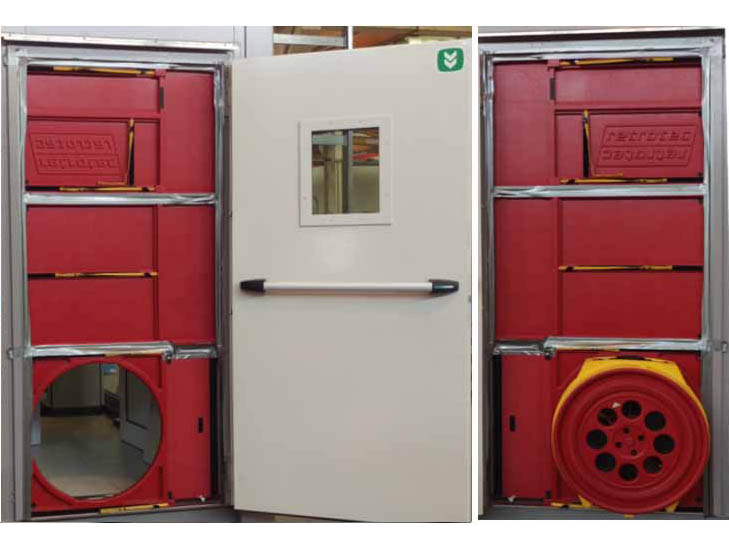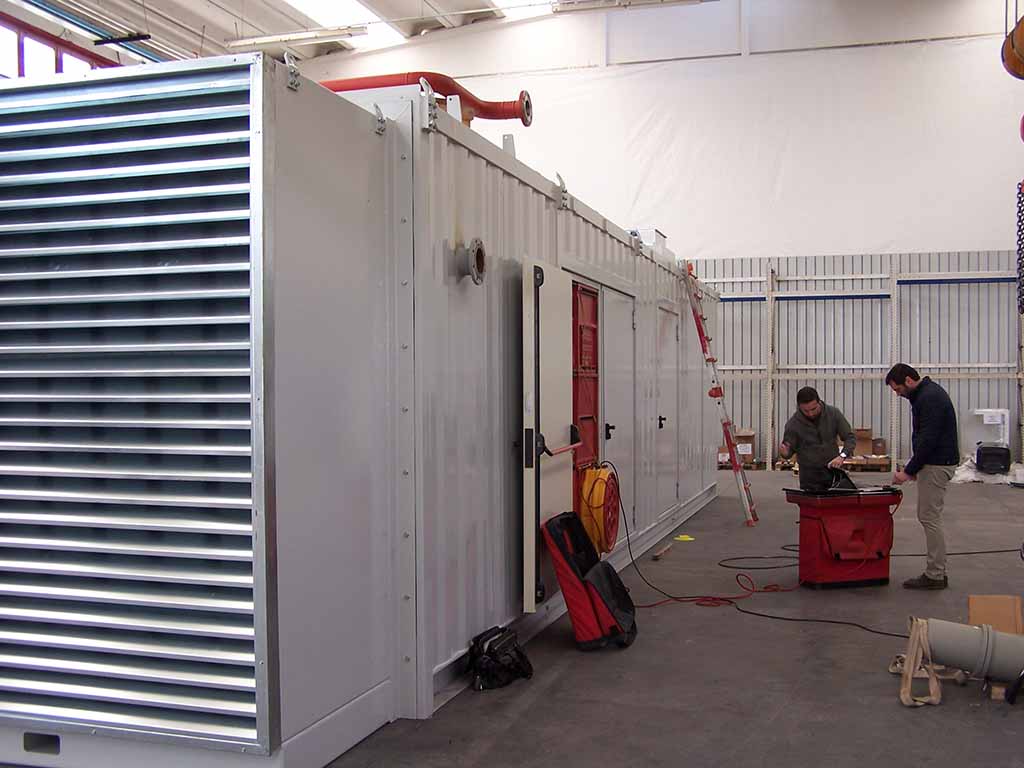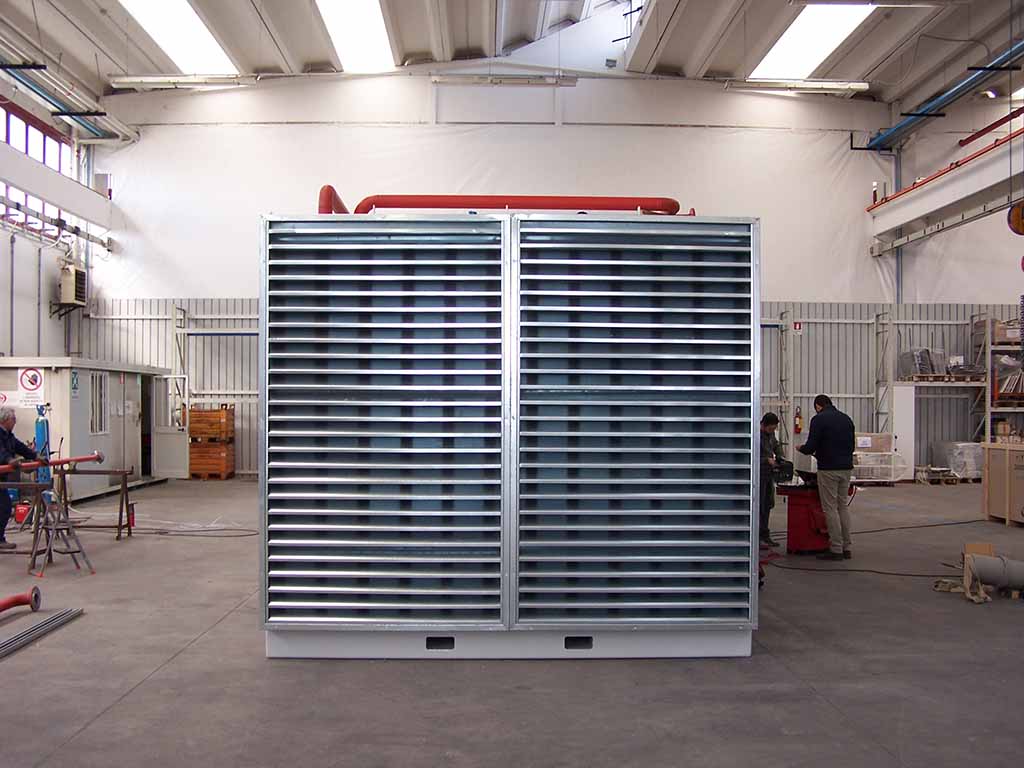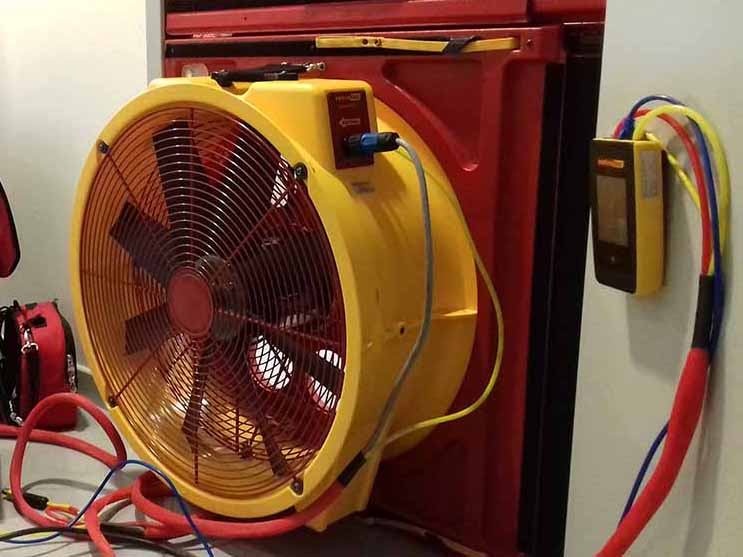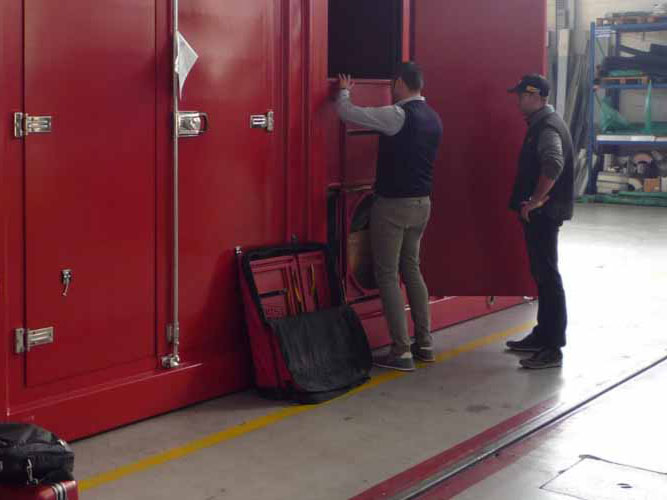What is the Door Fan Test
Used for several years, in the United States, as an aid to the design of heating and air conditioning systems; at the end of the 80s it was developed and codified in the field of fire protection engineering, for the verification of the premises protected with gas saturation extinguishing systems. The Door Fan Test test protocol was officially formalized in the 1989 edition of the standard: NFPA 12A: “Halon 1301 Fire Extinguishing Systems ”.
The DOOR FAN TEST
is a procedure for analyzing and verifying the sealing characteristics of a room, i.e. its ability to prevent an air flow from being created through the walls in the presence of a pressure gradient between inside and outside. compartmentalize. The Door Fan Test provides a method for evaluating the extent of leaks in a room and its ability to retain the gas emitted by a Total Flooding Discharge system inside. It also allows you to proceed with the systematic search and identification of the leakage areas present on the surfaces that delimit the room.
Execution
It is implemented by pressurizing and depressurizing the room and measuring the air flow rates necessary for the purpose by means of an equipment that consists of: A panel to be adapted to the opening of a door compartment of the room to be examined 1 or 2 fans with adjustable speed, to be install on the aforementioned panel, to introduce and extract air from the room. A control console with instruments for measuring the pressures inside and outside the room, the air flow generated to obtain them, and the internal and external temperatures. A calculation unit (PC) for the processing of the measured values and the extrapolation of the sealing characteristics of the room Figure 1. Equipment for Door Fan Test
DOOR FAN TEST EXECUTION
The execution of the Door Fan Test before the preparation of the project; it therefore allows to ascertain the feasibility of a gas saturation protection system within the volume to protected; also allowing to evaluate the technical-economic convenience of alternative solutions. It also provides, during the project, the information necessary for the definition of any Project Factors or maintenance discharges, also in relation to the dangers associated with the presence of people in the protected areas. In the following we will describe which are the aspects that most influence the sealing characteristics of the protected volume; referring from time to time to real cases of premises subject to Door Fan Test.
THE STAGES OF EXECUTION OF THE TEST
The Door Fan Test conceptually developed in 3 stages:
MEASUREMENT: The amount of air flow introduced / extracted into / from the room is measured to generate a certain overpressure / depression value inside it.
CALCULATION: From the measured values it is possible to calculate the Equivalent Leakage Area (ELA); i.e. the total area of all leaks, cracks; joints and porous surfaces that allow leaks from the compartmentalization surfaces of the room in question.
PREDICTION: Once the Equivalent Leakage Area is known, it is possible to estimate the retention time of the gas inside the room.
THE TEST PROCEDURE
Let’s now analyze in detail the Door Fan Test procedure to understand what principles it is based on.
Measurement and Calculation
The procedure followed in carrying out a Test involves the introduction of a flow of air into the room to pressurize it up to the overpressure value which would be determined by a real discharge of extinguishing agent inside it. The measurement of the flow of air introduced gives an indication of the losses (ie the flow of air that comes out). In fact, in equilibrium conditions it results that in the unit of time: volume of incoming air = volume of outgoing air.
Knowing therefore the flow of air introduced; the discharge coefficient of the fan in the presence of a laminar air flow; the induced overpressure and the air density can accurately calculated the ELA understood as the theoretical area of a hole with sharp edges; through which everything passes the flow of loss; to the test pressure. The same type of test will repeated by performing a Depressurization of the room; in order to minimize the influence on the Static Pressure measurement; ie a pressure delta between the inside and outside of the room already present before the start of the Test. The effective value of the ELA will be given by the average between the two values obtained as described above
SEALING OF LEAKS
Complete repetition of the test
In carrying out the tests described, leaks searched for by using chemical smoke.
The use of the smoke generator involves the release into the environment, during the pressurization phase, of modest
quantities of smoke, through special “smoke puffers” (a sort of smoke emitting pump), near
cracks and probable leak points, to appreciate the release of smoke, which also allows you to identify
hidden leaks (small cracks in the walls, leaks along the window frames or along the
couplings between perimeter panels, etc…).
DOOR FAN TEST EXECUTION
The execution of the Door Fan Test before the preparation of the project; it therefore allows to ascertain the feasibility of a gas saturation protection system within the volume to protected; also allowing to evaluate the technical-economic convenience of alternative solutions. It also provides the information necessary for the definition of any Project Factors or maintenance discharges during the project; also in relation to the dangers associated with the presence of people in the protected areas. In the following we will describe which are the aspects that most influence the sealing characteristics of the protected volume; referring from time to time to real cases of premises subject to Door Fan Test.

